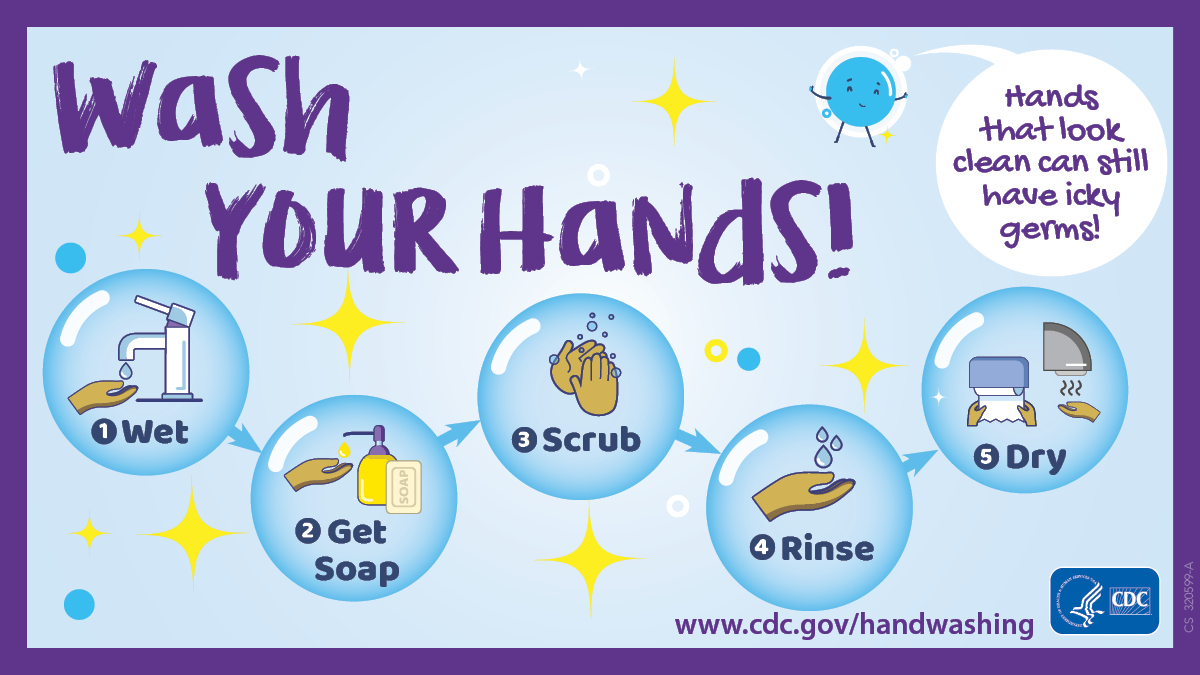
It’s common knowledge that being committed to the proper handwashing technique during the pandemic is one of the most important steps we can take to help stop the spread. With the rise of the COVID-19 pandemic and its rapidly mutating strains, washing your hands and keeping up the habit of good hygiene is crucial to protect the health of you and your loved ones.
Good hand hygiene is more than just running your hands underwater. We’ll discuss the proper handwashing technique and overview the best way to wash your hands. In this article, you’ll learn how to wash your hands thoroughly and properly. We’ll also discuss the effectiveness of handwashing and using hand sanitizer.
How Germs Spread
Everyday tasks such as handling raw meat, going to the toilet, or changing a diaper introduce us to trillions of germs from human and animal feces every day. A single gram of human feces contains up to a trillion germs, some of which cause diarrhea and respiratory infections such as the adenovirus and hand-foot-mouth disease.
Furthermore, when someone who’s infected coughs or sneezes on an object, they leave a trail of germs around them. These germs can live on the surface of an object for days. The germs get onto the hands of the uninfected person when they touch the surface of the contaminated object. If the germs aren’t washed off, they can be passed from person to person and make people sick. The National Institute of Health Lab reported that the COVID-19 virus can live on surfaces for up to 3 days, and with the rapidly evolving strains of influenza, experts advise the public to wash hands frequently to protect the health of you and your community.
Germs can spread from other people or surfaces when you:
- Touch your eyes, nose, and mouth with unwashed hands
- Prepare or eat food and drinks with unwashed hands
- Touch a contaminated surface or objects
- Blow your nose, cough, or sneeze into hands and then touch other people’s hands or common objects

When To Wash Your Hands
It is recommended to make a habit of regularly washing your hands. Washing your hands with soap, water, and the proper handwashing technique removes germs from your hands. This helps prevent infections as people unconsciously touch their eyes, nose, and mouth, hence transferring germs into the body from these orifices and making them sick. Besides that, germs from unwashed hands can get into food and drinks or get transferred to other objects and surfaces, making people sick.
Here are some of the most crucial times to practice hand hygiene according to the Centre for Disease Control and Prevention:
- Before, during, and after preparing food
- Before and after eating food
- Before and after caring for someone at home who is sick with vomiting or diarrhea
- Before and after treating a cut or wound
- After using the toilet
- After changing diapers or cleaning up a child who has used the toilet
- After blowing your nose, coughing, or sneezing
- After touching an animal, animal feed, or animal waste
- After handling pet food or pet treats
- After touching garbage
Proper Hand Washing Technique
Good handwashing is the first line of defense against pesky illnesses and diseases. The Centre for Disease Control and Prevention provide 5 easy steps on how to wash your hands with the proper handwashing technique:

- Wet your hands with clean, running water (warm or cold), turn off the tap, and apply soap. Surfactants in soap are handy at lifting soil and microbes from the skin.
- Lather your hands by rubbing them together with the soap. Lather the backs of your hands, between your fingers, and under your nails as it creates friction to lift dirt, grease and microbes from your skin.
- Scrub your hands for at least 20 seconds. Need a timer? Hum the “Happy Birthday” song from beginning to end twice.
- Rinse your hands well under clean, running water.
- Dry your hands using a clean towel or air dry them.
Check out the science behind these 5 handwashing steps if you’re interested in learning more.
Soap and Water VS Hand Sanitizer: Which is More Effective
Washing your hands with soap and water is the best way to get rid of germs, but we may not have access to soap and water all the time. In these scenarios, opt for an alcohol-based hand sanitizer that contains at least 60% alcohol. These hand sanitizers may come in the form of liquids, wipes, and sprays and in travel sizes so you can carry them with you at all times.
According to the CDC, although hand sanitizers can reduce the number of germs, hand sanitizer has some limitations:
- Hand sanitizer does not get rid of all kinds of germs
- It may not be as effective when hands are visibly dirty or greasy
- It may not remove harmful chemicals from hands like pesticides or heavy metals

How to Use Hand Sanitizer
- Apply the gel product to the palm of one hand (read the label to learn the correct amount).
- Rub your hands together.
- Rub the gel over all the surfaces of your hands and fingers until your hands are dry. This should take around 20 seconds.
Proper Hand Washing Technique Helps Battle the Rise in Antibiotic Resistance
Just by washing your hands, about 30% diarrhea-related illnesses and about 20% of respiratory infections can be prevented. Cutting down the number of infections and diseases prevents the overuse of antibiotics prescribed to the diseases and the likelihood of antibiotic resistance developing. Protect yourself and your loved ones from infectious diseases by religiously washing your hands, ensuring you use the 5 steps of the proper handwashing technique that we went over. To further protect yourself and your loved ones, consider the Circle HealthPod Portable Covid Test which you can take at home to find out your Covid status in 20 minutes.






